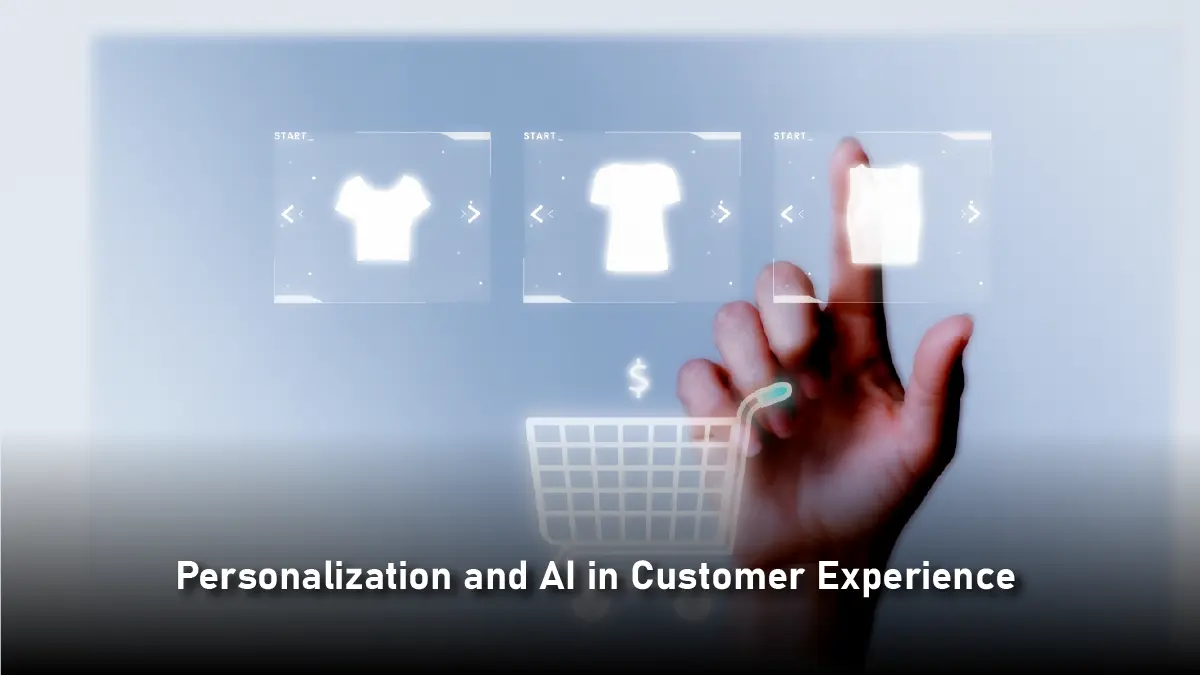The digital customer journey has become the backbone of modern business success, as more customers interact with brands online than ever before. Consumers are increasingly prioritizing value and convenience over brand loyalty, and digital-first interactions are rising sharply across major markets. The customer experience should always come first in any firm, starting long before a purchase and continuing well beyond it.
A seamless digital experience is now critical for retaining customers, with businesses integrating AI-driven chatbots and personalized content to meet evolving expectations. Globally, efforts to digitally connect individuals, businesses, and governments are reshaping how customers interact, particularly in emerging markets, creating new opportunities and challenges for brands.
An efficient method to enhance these interactions is to map the digital customer journey, a concept modern marketers must fully understand along with its benefits and applications for a complete digital marketing strategy.
What is a Digital Customer Journey?
From initially observing the product to purchasing and using it, this is the route to purchase and retention. The customer journey encompasses all of the customer’s touchpoints, or points of connection with your organization, and gathers information about transactions, cross-device browsing history, customer care encounters, and consumer data.
In the past, a customer’s journey to a business always started with exposure to an advertisement on television or radio, continued with a visit to a physical store and a purchase. The experience is considerably different in the modern world because of technology:
- In 2025, households globally continue to adopt more connected devices, reflecting the growing influence of IoT on the customer journey.
- Mobile commerce continues to rise sharply, emphasizing the need for brands to optimize mobile touchpoints across apps, websites, and social channels.
- Consumers are increasingly using multiple devices throughout the day to research, compare, and transact, creating more complex and digital-first journeys.
B2B Digital Customer Journey Touchpoints (2025 Updates)
Anything a B2B buyer uses to communicate with a seller or vendor is referred to as a touchpoint. This covers both digital (website, app, chatbot, AI agents, shoppable video, etc.) and in-person encounters (phone, live chat, events/conferences, etc.). Touchpoints (e.g., emails, blog posts, on-demand films, AI-driven content, etc.) might be one-sided and asynchronous, or they can feature live, real-time communication.
The most typical B2B customer touchpoints in the digital journey now include:
- Mobile app
- Website(s) that contain blogs, documentation, PDFs, and more
- E-procurement/ecommerce portal
- Your procurement department
- Video conferencing/virtual events
- Live chat
- In-person meetings and events
- Phone
- Web search engines
- Emerging digital touchpoints: AI agents for personalized support, shoppable video experiences, and integrated apps for streamlined transactions
Modern buyers engage across multiple touchpoints simultaneously, making it critical for businesses to adopt an integrated approach to journey mapping and touchpoint optimization.
Also Read: 5 Customer Journey Automation Strategies That Boost B2B Conversions
What are the Steps to Map the Customer Journey?
Step 1: Conduct customer research
Using information from primary research, you develop a digital consumer journey map. A key component of making customer-centric decisions is gathering and evaluating data about target audiences.
Conduct focus groups, in-person interviews, and brainstorming workshops to make sure you have accurate information.
Step 2: Design a buyer persona
Make buyer personas using the research data that has been gathered. A buyer persona is a profile that takes into account the traits and actions of the ideal customer, including their demographics.
Consider the various demands and expectations of your personas when creating a digital customer journey map. With the help of these personas, you can gain a deeper understanding of your clients’ requirements, issues, and motivations. Modern buyers often engage across multiple touchpoints before making a decision, which means journey mapping must reflect an integrated, multi-channel approach.
Step 3: Leverage the power of personalization
Consumers face an overload of choices, so clarity and relevance matter. At this stage, focus on aligning your messaging and offers with the buyer persona you’ve built. Keep it practical. The goal here is not deep AI personalization yet (we’ll get to that later) but ensuring your audience sees the right message at the right moment instead of generic noise.
Step 4: Describe the phases of a customer’s digital journey
Finding the steps that will compel your customers to complete a purchase is the next step.
At every stage, take into account the viewpoint, thoughts, goals, and pain points of the consumer. This will enable you to comprehend the challenges and goals that each customer is attempting to meet. New frameworks such as the ‘4S behaviours,’ streaming, scrolling, searching, and shopping that help capture how consumers actually behave in 2025, making journey mapping more accurate.
Step 5: List all your touchpoints with the potential customers
Touchpoints are places where potential customers engage with your company.
They may include:
- Websites
- Social media profiles
- Blogs
- Ads
- YouTube videos
- E-books
- Chatbots
Make a list of every customer touchpoint and assess how well it fits the journey for each one first. Keep in mind that based on the customer journey map of each buyer profile, different touchpoints apply.
You may determine which touchpoints are most important to them during the purchasing process by outlining them.
Next, maximize every interaction point for conversion and customer onboarding.
If you’re not sure, find the sources of traffic using web analytics.
Step 6: Sync up your touchpoints to provide a seamless customer experience
Put everything together after you’ve identified the key phases of a customer journey and the customer touchpoints.
To assist customers from beginning to end, create a digital customer journey map that is well-organized.
Step 7: Regularly update customer journey maps
Since changes are frequent, maintaining a customer journey map requires constant investment.
Find opportunities to enhance customer satisfaction after you’ve created a digital customer journey map.
Gather consumer feedback often and utilize it as the basis for enhancements in order to do this.
The customer journey is also something you may personally go through. As you progress through each level, make a note of any challenges you face.
To get you started while you examine the customer journey, consider the following questions:
- Was the procedure of making a purchase simple?
- Regarding customer service, how simple was it to contact?
- Was the representative friendly?
- How much time does the entire exercise take?
- Do the details at each level still make sense?
- What is a smooth customer experience that you should provide?
Personalization and AI in Customer Experience
 If 2020 was about shifting online, 2025 is about shifting smart. Customer expectations no longer stop at ‘fast’ or ‘available,’ they demand personal, predictive, and proactive experiences. This is where personalization and AI move from buzzwords to the backbone of the customer journey.
If 2020 was about shifting online, 2025 is about shifting smart. Customer expectations no longer stop at ‘fast’ or ‘available,’ they demand personal, predictive, and proactive experiences. This is where personalization and AI move from buzzwords to the backbone of the customer journey.
McKinsey highlights a sharp transition from generative AI to agentic AI in customer service. Instead of just drafting responses, AI systems are now making autonomous decisions that actively shape customer interactions. That means fewer delays, smoother resolutions, and an overall journey that feels almost human in its responsiveness.
Accenture adds a note of caution stating 35% of customers worry that AI could actually hurt service quality if mishandled. The signal is clear: AI works only when it enhances empathy, not when it replaces it. Brands that blend automation with human touchpoints are winning trust.
Salesforce data shows how companies are already applying this at scale, with AI now embedded into personalized marketing strategies. From predictive product recommendations to adaptive content journeys, AI is pushing engagement and conversion higher without bloating costs.
SEMrush takes it one step further, pointing to AI’s role in real-time customer experiences from instant personalization on websites to smarter attribution across multiple touchpoints. This closes the gap between brand promises and customer reality.
For brands, the takeaway is simple. Personalization powered by AI is no longer an add-on. It’s the engine that determines whether a customer sticks around or clicks away.
What About B2B Customer Mapping?
 The fundamentals of journey mapping don’t change whether you’re selling to consumers or businesses. But in B2B, the path is more layered and politically complex. You’re not just selling to one buyer; you’re selling to a committee of decision-makers with different priorities.
The fundamentals of journey mapping don’t change whether you’re selling to consumers or businesses. But in B2B, the path is more layered and politically complex. You’re not just selling to one buyer; you’re selling to a committee of decision-makers with different priorities.
Three 2025 realities stand out:
Multiple personas still rule: A CIO, a finance lead, and an operations manager might all weigh in on the same deal. Mapping the journey means building personas for each and tracking where their motivations overlap and where they diverge.
High stakes, higher churn risk: Salesforce’s 2025 research shows 54% of consumer goods leaders now struggle to achieve profitable growth. In B2B that translates into cautious buyers and longer deal cycles, making retention even more critical. Losing one account can hit harder than losing a dozen retail customers.
Feedback looks different: Referrals, peer recommendations, and direct conversations still dominate B2B decision-making. LinkedIn’s 2025 data reinforces that peer influence remains a top driver of B2B trust, making one-to-one outreach or community engagement far more valuable than generic surveys.
For B2B brands, journey mapping isn’t just about touchpoints. It’s about recognizing the network effect of influence inside organizations and aligning your playbook accordingly.
Final Thoughts
Mapping the digital customer journey has always been about clarity. In 2025, it’s about connection and intelligence. AI is no longer a sidekick but a co-pilot, powering personalization that feels natural rather than intrusive. At the same time, the fundamentals still hold true; journey maps remain the best lens for spotting friction, uncovering customer needs, and aligning teams around the experience that matters.
For B2B brands, the challenge is even sharper. With multiple decision-makers, shrinking margins, and peer trust driving choices, journey mapping isn’t just a CX exercise. It’s a growth strategy. The businesses that win will be the ones that marry data-driven insights with human trust, using AI to scale personalization without losing authenticity.
The message is simple. Don’t just draw the map. Keep walking it, updating it, and letting it guide how you show up for customers every single day.


Comments are closed.